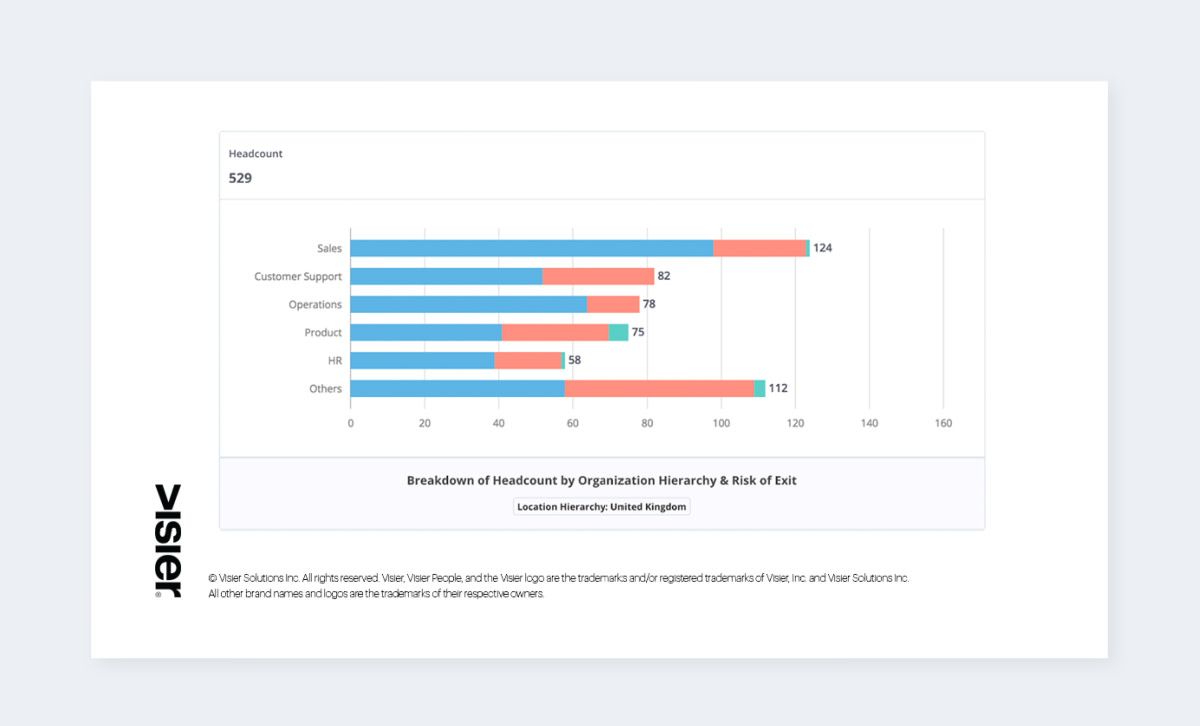Why Agile Workforce Planning is Key to Organizational Success
Agile workforce planning practices enable organizations to minimize risk and capitalize on upside opportunity. Learn more.

Business agility is no longer for the brazen few. Rapid technology change, shifting demographics, competitive markets, and other trends have necessitated new types of business structures that are optimized for adaptability. This is supported by a critical element that is often overlooked: agile workforce planning.
In short, to have a responsive workforce, the process that supports this–workforce planning–needs to be adaptable itself.

Typically, workforce plans are executed on an annual basis, with budgets firmly set for the year. This may have been sufficient in an era when markets were more predictable. But when there are sudden changes in immigration policy, or a new digital-driven competitor emerges mid-way through the fiscal year, it can be difficult to change course.
Agile workforce planning practices enable organizations to minimize risk (such as talent shortages) and capitalize on upside opportunity in an era of disruption.
The 4 Critical Elements of Agile Workforce Planning
1. Continuous activity
Why you need it:
When workforce planning marches to the drum of the fiscal year, businesses often need to set aside money for extra budget “just in case” people end up costing more than expected. One large organization I worked with had allocated 5% of its compensation budget to cover any overage resulting from an imprecise budgeting process.
Such a fund may always be necessary in an unpredictable market, but when workforce plans are refreshed on a shorter cycle, they are more accurate, and this type of budget padding can be significantly reduced. This frees up funds for other critical projects, such as learning and development. When planning is done on a shorter cycle, it also enables HR to quickly realign resources to different projects as they become more critical.
What gets in the way:
Planning is often spreadsheet-based, with HR pulling information from many disparate systems (covering everything from compensation and performance data to financial targets). This can take a significant amount of time, which means that rapid-cycle planning is simply not feasible.
Top Tip:
Look to reduce the amount of time your team manually pulls data from disparate systems. When this process becomes automated and analytics-based, you can look ahead at how many open positions need to be filled, when they must be filled, and where in the organization they are needed the most. This gives you the necessary time to either move budget around or talk to the manager about delaying the hire until budget accumulates. Now you can hire on genuine need, and respond more quickly to market shifts while forecasting more accurately.
2. Awareness
Why you need it:
CFIT accidents happen when perfectly good airplanes, under pilot control, are unintentionally flown into obstacles such as a mountain. Many of these types of crashes are the consequence of poor situational awareness. Pilots must know at all times what their position is, and how their actual position relates to their environment.
Just like a seasoned pilot, an HR leader always needs critical awareness. It’s important to have a solid understanding of how the business is doing in relation to planned hiring targets, compensation budgets and other key business objectives. With an awareness of where deviations may be happening in the plan, HR can best support the organization’s goals.
What gets in the way:
HR needs an accurate snapshot of the current situation to make a starting point for the plan and to compare actuals to the plan. But often, the manual process to get headcount and Total Cost of Workforce (TCOW) takes too long. The snapshot is obsolete by the time the planning team gets it.
Top tip:
To get an accurate snapshot, it is not enough to view analytics from several individual systems. Look for a workforce planning tool that uses the unified data from your HRIS and financial systems to give you an accurate picture of your current headcount, organizational structure and total cost of workforce as a starting point for your workforce plan. Functionality that helps you easily keep track of how headcount and cost targets vary from plan is also a critical asset. This enables you to see how actuals for headcount and costs compare to their values in the plan to keep track of how well your plan is being executed.
3. Collaboration
Why you need it:
Skills requirements are evolving at an increasingly rapid pace. Consider all the high-paying jobs (such as data scientist, sustainability director, or mobile applications developer) that only emerged within the last few years.
When workforce planning is done in a vacuum, HR and senior leaders can miss crucial feedback from line managers and other subject matter experts about key skills that are on the horizon. To stay ahead of critical skills gaps, the planning team needs input from people on the front lines: What do we do to get those skills? Can we train our own people? Plan for an aggressive recruitment strategy? Or is it better to look at contingent labor as a short-term solution?
What gets in the way:
When it takes too long to collect feedback, HR makes assumptions that end up being inaccurate, and there is a lack of buy-in from managers to execute the workforce plan.
Top tip:
Make it a priority to have all levels of business quickly give input and collaborate on the creation of a workforce plan. Track whether your plan contributors are completing their assignments to let you assess project progress and help you determine what to do in each individual case.
4. Flexibility
Why you need it:
A significant event, such as a merger or acquisition, can dramatically alter your staffing and skills requirements within a very short time. The level of unpredictability also increases when external players are involved: prized M&A deals often fail to go through or can even threaten the business. Consider how Toshiba’s future was put in jeopardy after it bought Westinghouse Electric Co., a nuclear services company. The volatile nature of business deals means HR needs to be prepared for multiple scenarios.
What gets in the way:
Oftentimes, information is spread across the organization in siloed systems within various departments and is difficult to aggregate and reconcile. This makes it difficult to create one plan, let alone multiple.
Top tip:
Look for workforce planning technology and tools that enable you to create and compare different workforce planning scenarios (each with different workforce movement and cost assumptions) so that not only can you choose the best option for your organization, you can have contingency plans in place.

Change the Conversation to Eliminate Surprises, Reduce Costs, and Drive Performance
“It is not the strongest who survive, but the most adaptable.” Contrary to popular belief, Charles Darwin didn’t actually say this, but it does speak to a certain truth about the requirements of businesses today.
With analytics-driven, agile workforce planning, HR and finance can spend more time charting the way forward instead of arguing over the accuracy of headcount numbers or hiring simply because it’s in the budget.
With the ability to accurately adjust the plan on the fly, the plan is also more precise. This has a direct impact on costs, but more crucially, has tangible impacts on productivity and business performance.
Get Outsmart content straight to your inbox
Subscribe to the People Insights Monthly newsletter for actionable insights and stories.
Subscribe now